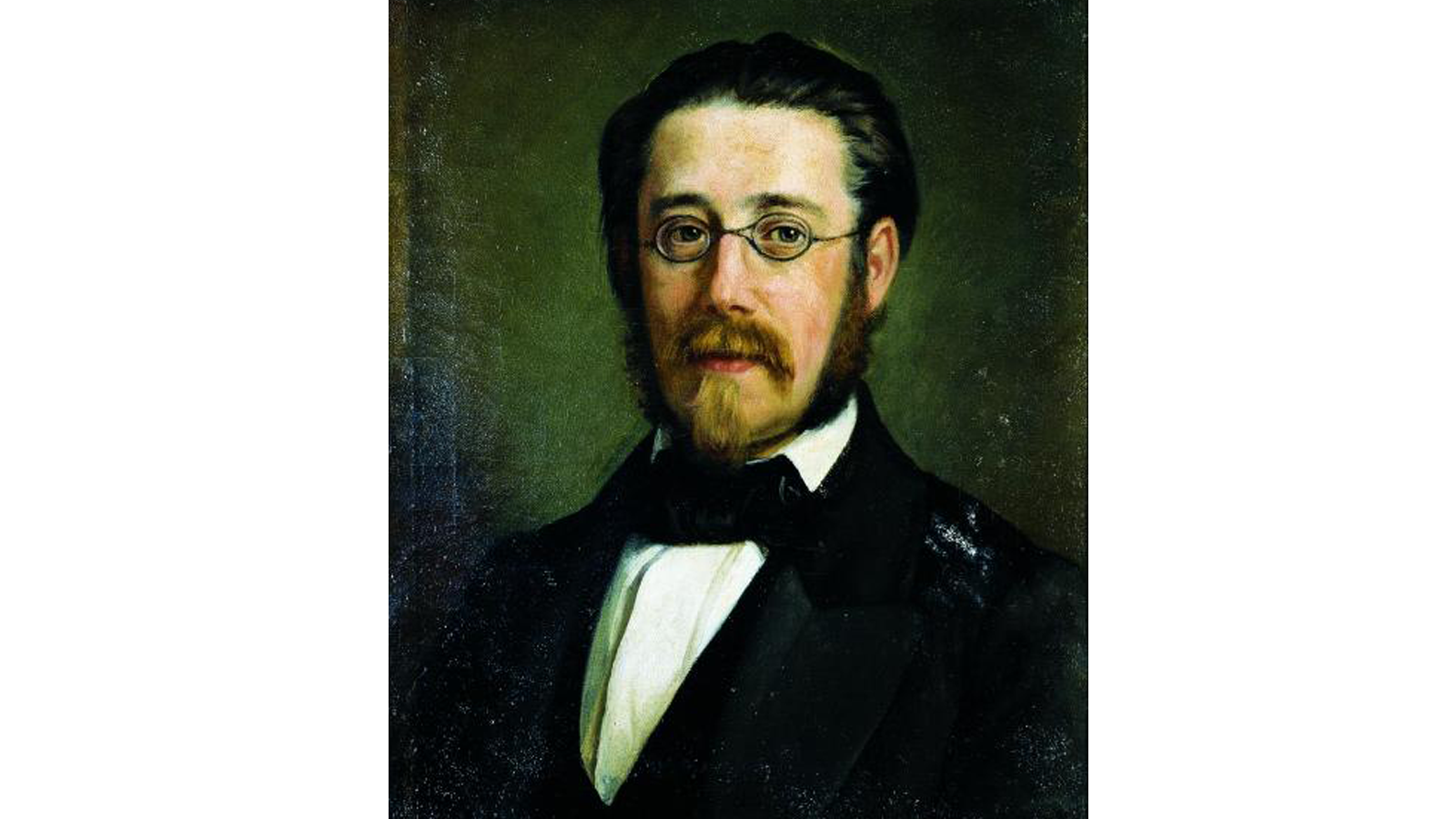
No. 37
Smetana: Ma Vlast

Ma Vlast, translated as “My Country” is a collection of six tone poems, each describing some aspect of the countryside, history or memories of old Bohemia by Bedrich Smetana. At least five of the tone poems were written after Smetana had gone deaf and constitute a kind of aural projection of his love for his homeland. They were written in the last quarter of the 19th Century when there was some hope that Bohemia, after hundreds of years of domination by Austria, might form its own nation.
The 1st tone poem, Vyšehrad, was the second of the six to be written. The music begins with the sound of the harp, which represents the mythical bardic singer of Bohemian myth, Lumir calling up the story of the ancient castle, Vyšehrad that stands above the Moldau River. After some development we hear the four note motif that represents the Castle build to huge climax, that gets interrupted by a downward scale that represents the crumbling of the castle’s walls. The music ends quietly with the sound of the river passing below the ruins.
The 2nd tone poem, Vltava is the most famous of all the tone poems that make up Ma Vlast, “Vltava” is the Czech name for the “Moldau” River. Smetana describes this, his most famous composition, this way: “The composition describes the course of the Vltava, starting from the two small springs, the Cold and Warm Vltava, to the unification of both streams into a single current, the course of the Vltava through woods and meadows, through landscapes where a farmer's wedding is celebrated, the round dance of the mermaids in the night's moonshine: on the nearby rocks loom proud castles, palaces and ruins aloft. The Vltava swirls into the St John's Rapids; then it widens and flows toward Prague, past the Vyšehrad, and then majestically vanishes into the distance, ending at the Labe (or Elbe, in German).”
The 3rd tone is called Šárka. Šárka is a warrior maiden who leads a revolt of Czech maidens against their male overlords. She manages to seduce their Prince and when the guileless and besotted men fall asleep the maidens rise up and slay them.
The 4th tone poem is almost unpronounceable, Z českých luhů a hájů or “From Bohemia’s woods and fields”. The title speaks for itself, but it may help to know that like Beethoven’s 6th Symphony, the music ends by depicting a peasant celebration.
The 5th and 6th tone poems, Tábor and Blanik go together and are about the Hussites, an early proto-Protestant sect that staged a revolt centered on their home city, Tábor that was brutally crushed. In the 19th Century it served as a kind of a precursor to the emotional claims of a Czech identity expressed as a nation. And that expression of a dawning nationalism is the subject of Blanik. Blanik is the name of a mountain inside of which St. Wenceslas waits with an army ready to ride out when it’s time to rescue the Czech people and restore the Bohemian nation to its ancient rights and privileges. Blanik ends with theme of the castle Vyšehrad high above the river Vltava.
Top 40 Countdown
A few years ago the listeners to WNED Classical told us what they thought a TOP 40 list of Classical pieces should be. Six hundred and twenty-two different pieces were put forward, and over nine hundred listeners participated. The result, The WNED Classical Top 40, was both startling and comforting. There were a number of surprises, Stravinsky and Copland made the list; Mendelssohn and Schumann did not! It was comforting to know that the two most popular composers were Beethoven and J.S. Bach. The biggest surprise of all was the piece that crowned the list as No. 1.